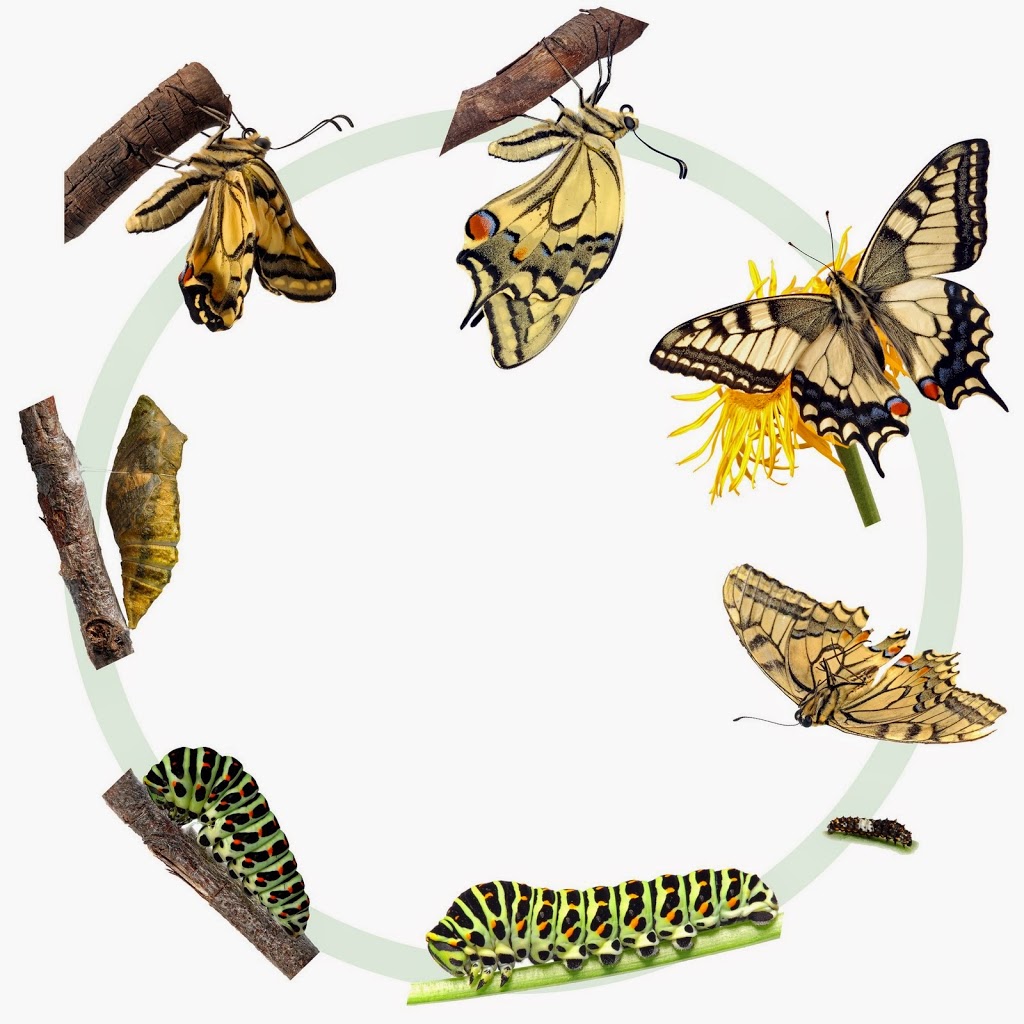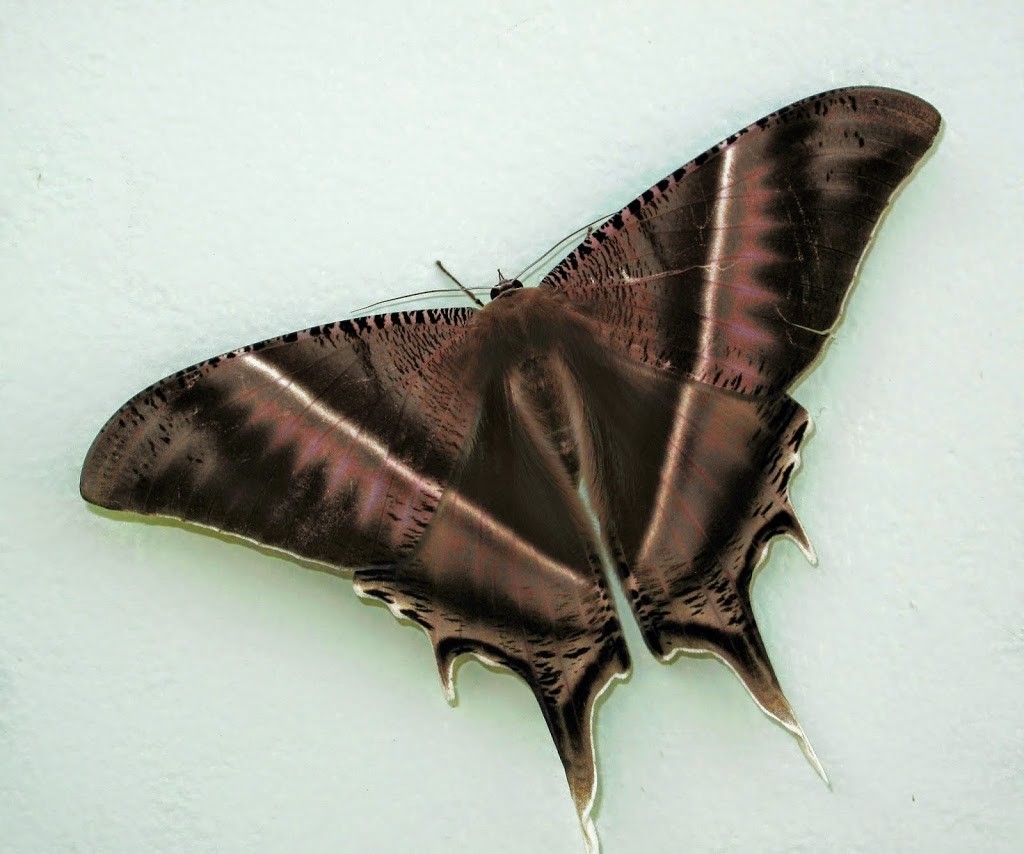
Image source
I’ve always been fascinated with the metamorphosis of moths and butterflies.
How in the world does an ugly, leaf munching caterpillar transform into a beautiful, flower sipping butterfly?
Or perhaps a handsome tropical swallowtail moth aka Lyssa zampa (in Singapore’s context).
For a start, the anatomical and morphological “remodeling” of the insect’s body during the different stages must’ve been quite remarkable.
Marvels of Metamorphosis
Imagine how a nondescript insect egg changes into an ugly and tiny caterpillar. The little grubby creature then munches and munches on foliage, and grows and Grows and GROWS.
Suddenly, it hangs from a leaf, wraps itself up, and freezes itself up as a chrysalis before finally emerging as a lovely winged butterfly or moth.
Consider too how radically different the diet, form and shape of the caterpillar is from a butterfly or moth.
You need to literally undergo “gut-wrenching” changes to shift from a diet of leaves to one of sweet nectar.
The Importance of Lepidopterans
By occupying separate and distinct niches, lepidopterans (the scientific name for butterflies and moths) can exploit different environments at different stages of their lives.
This ability to adapt has also allowed them to become one of the most successful groups of insects, flourishing on every continent except Antarctica.
Butterflies and moths are also hugely important as pollinators in our ecosystem. They help our trees, shrubs and grasses to propagate, and feed the global population of humans by helping to fertilise important crop plants.
Last but certainly not least – at least for us humans – lepidopterans are aesthetically beautiful insects.
Nothing uplifts the soul like a gorgeously coloured butterfly, flitting from flower to flower. Furry brown moths do have their share of fans too, especially if they are as visually spectacular as the Lyssa zampa!

How many Lyssa zampa moths have you seen lately (courtesy of Say Lah Singapore!)
What can we learn from these delicately winged friends of ours?
Lesson One: Choose Distinct and Profitable Niches
Like butterflies and moths, we should be very clear about the specific niches that we occupy at different stages of our life.
Are there unique opportunities out there that we can tap on? Which customer groups are currently under-served?
Likewise, a company at an early stage of growth may “feed” on the revenue generated from a specific range of products and services serving a certain market. This may vary as the organisation grows, and its customer tastes grow increasingly sophisticated (from leaves to nectar).
Lesson Two: Be Willing To Undergo Radical Change
What would happen if a caterpillar decides to remain as a caterpillar?
Other than eating boring bitter leaves (as opposed to sweet honeyed nectar), it would shut itself off from the pleasures of connubial bliss (lepidopteran style), and be unable to reproduce!
Over time, this would lead to the end of its kind.
Similarly, we need to bite the bullet when the time comes for us to undergo wrenching changes at critical crossroads in our lives.
This applies equally to individuals as it does to organisations. For individuals, this could be deciding between studying or working, or being single versus married. Meanwhile, companies faced with seismic market changes (eg line to mobile phones) have to remodel themselves to ride the new waves.
Lesson Three: Find the Right Time and Place
In nature, you can see that there is a perfect time and place for everything.
We notice that everything is perfectly synchronised and timed at the different life stages of an insect. A caterpillar can only transform into a pupa after it has reached a certain size. A pupal stage insect can only emerge from the cocoon after a certain number of days. Similarly, an adult moth will only live for a few weeks before its job is finally done.
Likewise, we should learn how to follow the right seasons and places for our activities.
Is it a good time for us to launch our business, considering the current market environment? Should we go ahead to pursue our dreams of a PhD when the professors are being retrenched from universities?
Finding the right blend of perfect time and place requires us to be sensitive to our environment and what its telling us.
Lesson Four: Be Useful and Add Value To Others
Consider what would happen if insects are completely wiped out from our planet.
While many would rejoice over the demise of mosquitoes, cockroaches and houseflies, the removal of butterflies, moths and bees may bring disaster to our many crops.
Instead of relying on our tiny fluttering friends, we may have to individually pollinate each and every plant with our fat fingers. Now try to imagine yourself doing that!
Be helpful and have an attitude of servitude. Find ways to add positive value to the lives of others whom you care about, be they your friends, family members, customers, colleagues or students.
Over the long-term, your passion would increase as you derive continued satisfaction and fulfillment in helping others.
Lesson Five: Create Works Of Art That Inspire
Finally, seek to add beauty, joy and meaning to the lives of others.
With their beautiful wings and delicate flying actions, butterflies have been the subject of uncountable artworks, poems, stories, books, and movies. Some of these date back thousands of years.
In a similar fashion, devote yourself to creating works of art that inspire, motivate and encourage.
This need not just be in the worlds of paintings, music, dance or theatre. Many everyday products and services can also be works of art – an elegantly designed smartphone, a neatly folded blanket, or a warm and inviting welcome at a hotel or a home.
(Admittedly, butterflies are usually more successful at inspiring works of art than moths, whom some may find creepy, but at least these nocturnal lepidopterans are not as feared or loathed as the Aedes mosquito!)
Are there other lessons which you can learn from these charming lepidopteran friends of ours?

Missing a “p” in your post to “lepidopterans”